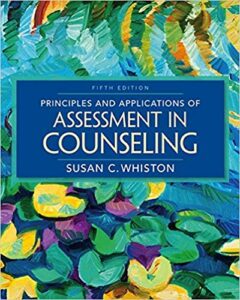Description
Test Bank For Principles And Applications of Assessment in Counseling 5th Edition By Susan
| Multiple Choice |
1. A term that is sometimes used instead of intelligence is:
|
2. Theories of intelligence based on the premise that intelligence can be described in terms of mental factors are called the:
|
3. The theory that intelligence is a composite of a general factor (g) and one or more specific factor(s) was advanced by:
|
4. Which of the following is NOT part of Guilford’s structure-of-intelligence theory?
|
5. Which individual’s original theory proposed that there were seven primary mental abilities and not a general ability factor?
|
6. Vernon’s hierarchical approach has two second-order factors, V:ed represents verbal and educational aptitudes, while K:m represents:
|
7. According to Cattell, a person trying to solve an entirely new kind of problem is using his or her __________, whereas a person working on a task that he or she knows well is using his or her __________.
|
8. A child sees a zebra, points to it and says, “Horse!” According to Piaget, this child’s behavior is an example of:
|
9. After hearing the child’s error, his sister corrects him, saying “No, that’s a horse.” The following week, the child sees a zebra and labels it correctly. According to Piaget, the child’s correction is an example of:
|
10. Piagetian approaches have influenced how intellectual functioning is measured through the examination of:
|
11. Ceci’s bioecological theory strongly emphasizes the importance of ___________ when considering intellectual performance.
|
12. Ceci’s bioecological theory is similar to Piaget’s in that:
|
13. According to Luria, ________________ processing involves integrating mental input, whereas ______________ processing is the ability to problem solve by arranging stimuli in serial order.
|
14. Sternberg’s triarchic theory is based upon the ________________________.
|
15. Which of the following theorists proposes that there are multiple intelligences rather than just one?
|

Reviews
There are no reviews yet.